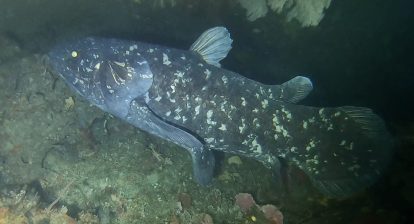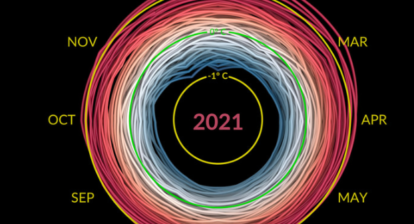The Great Dying: Earth’s Most Devastating Extinction Event and Its Warning for Today
The Perfect Storm
Professor Uwe Brand, a geoscientist from Brock University in Canada, describes the Great Dying as “the perfect storm” – a series of interconnected events that culminated in a global catastrophe. Unlike the asteroid impact that killed the dinosaurs, the Great Dying unfolded over a longer period, with each event exacerbating the next. His research has revealed that the destruction began with volcanic eruptions in what is now Siberia that burned everything in the path of its lava flow.
The Siberian Traps: A Volcanic Apocalypse
These eruptions created lava beds covering an area equivalent to half of the United States, releasing unprecedented amounts of greenhouse gases into the atmosphere. As the lava flowed, it ignited vast deposits of coal and oil, further amplifying the release of carbon dioxide. This process left behind a rare molecule called coronene, a smoking gun that helped scientists piece together the sequence of events.
A World Transformed
The consequences of this volcanic activity were profound:
- Global Warming: Temperatures soared by 18 degrees Fahrenheit above current levels.
- Ocean Acidification: As the oceans absorbed excess CO2, they became increasingly acidic, dissolving the shells of marine life.
- Oxygen Depletion: The warming oceans and decaying organic matter led to widespread oxygen depletion, creating vast dead zones.
These extremes resulted in land animals having to “rapidly adapt, move, or die,” leading to 70 percent dying off. Rising temperatures dried out vegetation, which led to raging fires on land
The situation was even worse in the oceans. Carbon dioxide from the Earth’s atmosphere was absorbed by sea water. This resulted in the formation of sulfuric acid in the oceans, exacerbating the Great Dying even further. Corals were destroyed, as were the protective shells of marine animals.
The widespread death and decay of organisms, both on land and in the ocean, depleted the water’s oxygen supply, threatening nearly all marine life.
Lessons for Today
The parallels between the Great Dying and our current climate crisis are striking and deeply concerning. Professor Brand warns that our current rate of greenhouse gas emissions is 10 to 20 times higher than during the Permian-Triassic extinction.Today, we’re witnessing:
- Rapidly warming oceans
- Increasing ocean acidification
- Expanding oxygen-depleted zones
These similarities serve as a stark warning about the potential consequences of unchecked climate change.
A Call to Action
The Great Dying serves as a sobering reminder of Earth’s fragility and the devastating potential of rapid environmental change. However, Professor Brand emphasies that it’s not too late to change course. By learning from this ancient catastrophe and taking decisive action to reduce greenhouse gas emissions, we can avoid repeating one of the darkest chapters in Earth’s history.







